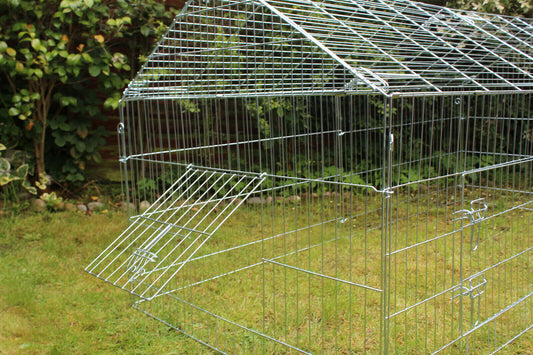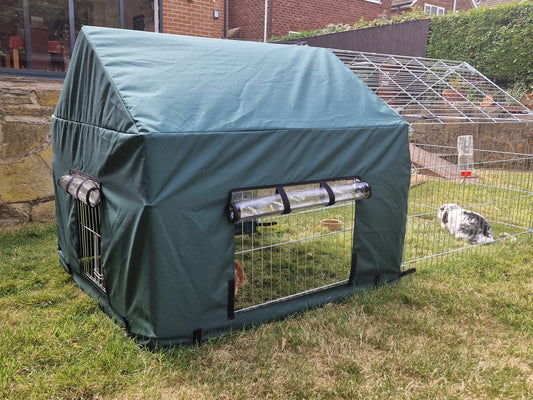Dogs are social creatures, instinctively living in packs like the wolves they evolved from. The domestic dog’s pack is more likely to be comprised of human members these days, although dogs that live together can form strong bonds too.
Don’t assume that your dog will get on with every other dog they meet. Like people, there can be clashes in personality and a dog’s past experiences will influence how sociable they are.
Starting Young
Puppies need to learn good doggie manners and how to behave around other dogs through spending time with them. If puppies miss this early socialisation, they can have trouble later in life when encountering unfamiliar dogs, so it’s important to get meetings right.
Learning how to communicate with other dogs effectively is a lesson that older dogs are always happy to teach the younger generation. A puppy that tries using its teeth or jumps all over another dog in greeting will soon be told that’s not the way to behave! Older dogs are generally very tolerant of youngsters but will have no trouble putting them in their place either.
Breeds of dog vary remarkably in size and shape, and it’s important that your puppy meets a good variety of different dogs during the first six months of their life so they do not become fearful of them.
Join the Party
Once your puppy is fully vaccinated, they are ready to go out into the world and meet others of their kind. However, it is important to manage these meetings so that your puppy is only meeting dogs that you know are friendly. A bad social experience at a young age can result in an adult dog who is unable to cope with canine encounters.
Some vets and dog trainers run puppy parties, which are informal get-togethers where puppies can experience as many positive interactions with other dogs as possible. Not all puppy parties are the same, so make sure you do your research before throwing your new pet in at the deep end. Ensure that the group is run by a qualified professional who can answer any questions you have about your puppy’s behaviour and that the group is not too big or chaotic. Too many encounters at once can overwhelm a young dog, putting them off wanting to socialise in the future. Parties with around five to six canine attendees at a time are ideal. If at any point you think play is becoming too boisterous for your puppy, you may need to step in and get your puppy to focus on you instead for a while.
Here are some questions to ask before you attend a puppy party:
- How many dogs will be attending?
- Are they all of a similar age?
- What is the venue like? Is it safe for off-lead play?
- Who is running the group? How do they ensure meetings are positive?
The puppy party route does not suit all dogs and, if your pet is particularly nervous or if you have left it too late in introducing them to other dogs, they will probably need a different approach. If you have friends with dogs that you know to be calm and friendly, you could set up some meetings on neutral territory where they can get to know each other.
Walking Encounters
Your dog will need to get used to meeting other dogs when out on walks and it is best if this is done gradually. You won’t always know the dogs that you bump into when you are out and about, and not all dogs will want to become best friends with yours. In fact, some dogs – especially if they have had negative experiences in the past – will not welcome any attention from your puppy at all and could react in a hostile way if you don’t realise this.
Here are some tips for sociable walks:
- When you practice lead walking, keep your dog’s attention on you by giving them the occasional training treat. This is a good way to distract your dog from an unwelcome doggie encounter.
- Don’t walk too closely to other dogs to start with. Reward your dog for calm behaviour and good loose-lead walking.
- If you have friends with dogs that you know are calm and friendly you could arrange to walk together. Allow your dogs to greet each other with a brief sniff but then get them moving.
- Make sure you go at your dog’s pace. Some dogs will seem more naturally sociable than others. You don’t want your pet to become overwhelmed so keep an eye on their body language to make sure they are happy. Signs of social anxiety in dogs include cowering, whining, trembling, panting or drooling.
Keep Greetings Short and Sweet
If your dog is visibly relaxed as another dog approaches you can ask the other owner if it is OK to say hello. The polite way for dogs to greet each other is by nose-to-bottom sniffing, but three seconds is long enough. Once they have greeted, calmly walk away and praise your dog for a good greeting. Keeping interactions brief will ensure that the experience stays positive for both parties.
Owner Etiquette
You should never allow your dog to rush up to another dog without checking with the owner first. A reliable recall is essential before you allow your dog to exercise off-lead so you can call them back quickly if you need to.
If you are walking with your dog off-lead and you see an on-lead dog approaching, you should call your dog back and put them on-lead temporarily while they pass. Not all dogs are happy to socialise so you should respect their need for space.
When to Seek Help
If your dog consistently displays anxious or aggressive behaviour when encountering other dogs, it is a good idea to get in contact with a qualified canine behaviourist. Your vet should be able to recommend a professional who can help you work with your dog to overcome any social anxiety.
Shop All Dog
If you enjoyed this article, you may be interested in:









